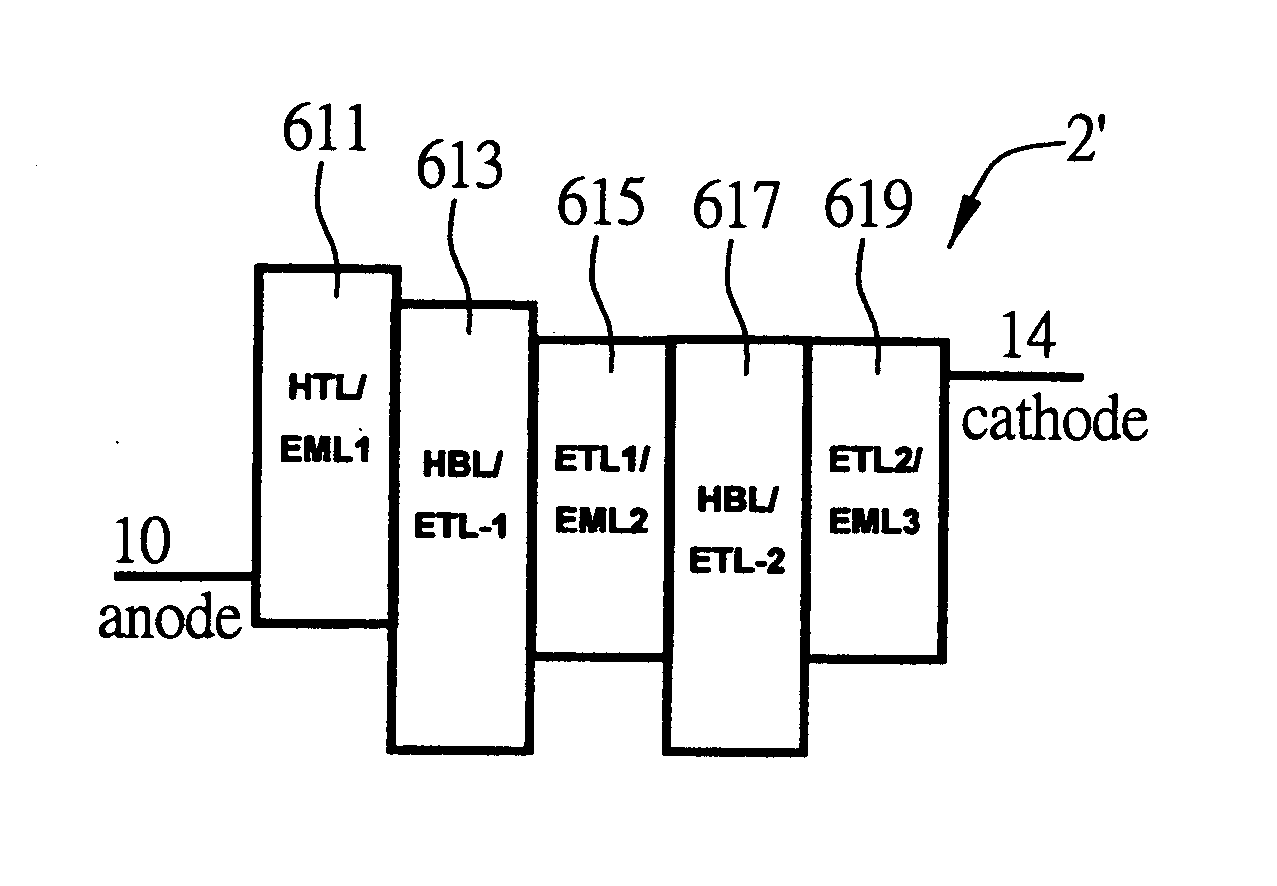Reconfigurable organic light-emitting device and display apparatus employing the same
- Summary
- Abstract
- Description
- Claims
- Application Information
AI Technical Summary
Benefits of technology
Problems solved by technology
Method used
Image
Examples
example
[0098] Referring now to FIG. 17, a cross-sectional view of a reconfigurable organic light-emitting device 4 having a light-to-heat conversion layer is illustrated. The reconfigurable organic light-emitting device 4 having a light-to-heat conversion layer comprises a glass substrate 1200 coated with ITO as a lower electrode, a layer of polyethylene dioxythiophene / polystyrene sulphonate (PEDT:PSS; see FIG. 18a) with a thickness of 300 Å deposited on the glass substrate 1200 coated with ITO as a hole injection layer 1202, a layer of ter(9,9′-spirobifluorene) (T-Spiro; see FIG. 18b) with a thickness of 400 Å deposited on the hole injection layer 1202 as a hole-transport / first light-emitting layer 1211, a layer of 2,9-dimethyl-4,7-diphenyl-1,10-phenanthroline (BCP; see FIG. 18d) with a thickness of 75 Å deposited on the hole-transport / first light-emitting layer 1211 as a hole-blocking / electron-transport layer 1215, a layer of tris-(8-hydroxyquinoline)aluminum (Alq; see FIG.18c) with a th...
PUM
 Login to View More
Login to View More Abstract
Description
Claims
Application Information
 Login to View More
Login to View More - R&D
- Intellectual Property
- Life Sciences
- Materials
- Tech Scout
- Unparalleled Data Quality
- Higher Quality Content
- 60% Fewer Hallucinations
Browse by: Latest US Patents, China's latest patents, Technical Efficacy Thesaurus, Application Domain, Technology Topic, Popular Technical Reports.
© 2025 PatSnap. All rights reserved.Legal|Privacy policy|Modern Slavery Act Transparency Statement|Sitemap|About US| Contact US: help@patsnap.com



